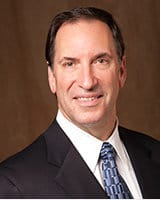
WHAT’S GOING IN YOUR WALLET, DOCTOR?
Dentists selling their practices may face some options. One option is a sale to a conventional purchaser, typically a dentist who is basically searching for a job. These sales take place at conventional price / gross metrics circling around 61%, the average ratio for 2,469 practice sales tracked in an informal survey.
Another option is to sell to corporate buyers. They generally come to the table with cash in hand and do not depend on the constraints of financing. They also tend to offer higher prices than conventional purchasers are willing or able to offer. It is not uncommon to see an offer of 80%, 90%, or even higher percentages.
In most transactions, it is not the price, but the terms that make the deal, and this case is no exception. The following is an analysis of these distinctly different offers in order to demonstrate the effect of terms and provide actual bottom line results to help sellers make the best informed decisions.
The first question an owner needs to ask themselves is “Am I ready to quit?” This answer is critical because corporate purchasers typically require a seller to work for them for two to four years after the sale, and meet production quotas in order to receive the full price that was offered.
If an owner accepts a corporate offer of 90% of gross, which is conditioned on the owner working for two to four more years, then hopefully they were not actually ready to quit because in order to receive that full offer, they must put in another two to four years of practice.
Now consider a seller’s alternative of working another two to four years for themselves and then selling to a conventional buyer at 61% of revenues and retiring. For the sake of comparison, we’ll assume that the seller produced at their current revenue rate in both scenarios.
The biggest variable in this analysis is how much the seller earns working for themselves versus working for a corporate buyer. DSO compensation levels from dentists are typically in the 25% commission range. It has been our observation that owner net income solely as a percent of personal production – not grossproduction which includes hygiene and associate production – is 55%.
Here is a statistical analysis of an actual practice using the average price gross of 61% (the actual ratio was higher based on received offers of 76%) and the average personal percentage net of 55% (the actual owner nets 68% of their personal production). Using average statistics rather than actual figures results in the comparison of the two options being closer than they would have been.
Let’s first look at a seller working two years before quitting, both for a corporate buyer after the sale, and in their own practice for two years before selling.
| Practice Sale Terms | 2 Year DSO | Conventional 2 Yr | ||
|---|---|---|---|---|
| CONV P/G Ratio & Future Price | 61% | $508,676 | ||
| DSO Price / Gross & Price | 90% | $707,424 | ||
| DSO Down Payment Amount of 80% of price | $565,939 | |||
| DSO Total Commissions Earned at 25% of Collection | $296,948 | |||
| Non-Selling Owner Net Income @ 55% of Collection | $653,285 | |||
| DSO Total Future Performance Payments | $113,188 | |||
| Total Revenues Collected | $976,075 | $1,161,961 | ||
In this two-year example, with the seller receiving the full offered price from the corporate purchaser, total proceeds from price and commissions are $186,000 less than had they worked for themselves for two years and then sold the practice for 61% of revenues. That amounts to fifteen months’ commission for working for the corporation.
Analyzing working four years for a corporate purchaser after the sale of their practice results in the seller collecting $550,000 less than had the seller worked in their own practice for four years and then selling it.
| Practice Sale Terms | 2 Year DSO | Conventional 2 Yr | ||
|---|---|---|---|---|
| CONV P/G Ratio & Future Price | 61% | $539,655 | ||
| DSO Price / Gross & Price | 90% | $707,424 | ||
| DSO Down Payment Amount of 80% of price | $565,939 | |||
| DSO Total Commissions Earned at 25% of Collection | $611,979 | |||
| Non-Selling Owner Net Income @ 55% of Collection | $1,346,354 | |||
| DSO Total Future Performance Payments | $157,205 | |||
| Total Revenues Collected | $1,335,124 | $1,886,009 | ||
Another finding in the four-year study is that if the owner worked for themselves for four years and then just closed the office without even selling it, they would have still have collected more money than they would have by selling it at 90% of gross to investors and working for them for four years. Selling the practice would add $540,000 to the seller’s receipts. Alternatively, the seller could retire two years earlier.
For these reasons, it only makes sense that sellers seek expert guidance when evaluating price and terms of an offer, and to consider what they want to end up with – a flattering price, or more money.

 Add me to your address book
Add me to your address book



